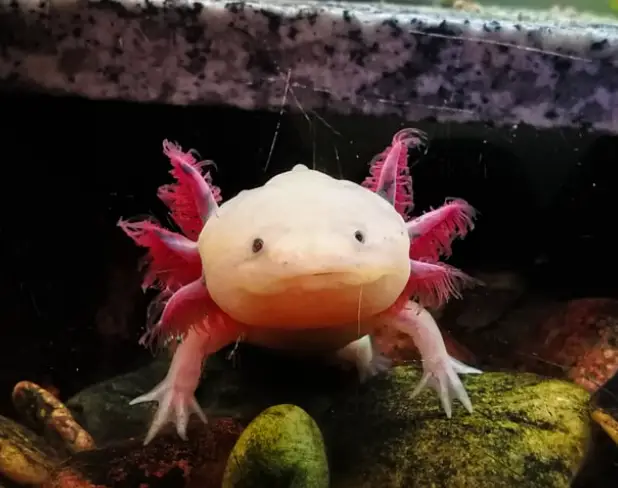Axolotls are fascinating creatures that are commonly kept as pets. However, like any living organism, axolotls are susceptible to various health issues, including parasitic infections. Parasites can cause severe harm to your pet axolotl and, if left untreated, can even lead to death. As an axolotl owner, it’s essential to know how to spot the signs of parasitic infections and how to treat them. In this article, we will discuss the various parasitic infections that can affect axolotls and provide you with useful tips on how to treat them. By following these tips, you can ensure that your axolotl stays healthy and happy for years to come.
What are parasitic infections in axolotls?
Axolotls are susceptible to a variety of parasitic infections. Some of the common parasitic infections in axolotls include:
- Ichthyophthirius multifiliis (Ich): Ich is a protozoan parasite that causes white spots on the skin and gills of infected axolotls. The spots are usually small and can be seen with the naked eye. The infection can lead to respiratory distress and eventually death if left untreated.
- Flukes: Flukes are flatworm parasites that can infect the gills, skin, and intestines of axolotls. Infected axolotls may exhibit symptoms such as lethargy, loss of appetite, and weight loss. In severe cases, the infection can cause damage to the gills and lead to respiratory distress.
- Nematodes: Nematodes are roundworm parasites that can infect the intestines of axolotls. Symptoms of nematode infection include bloating, weight loss, and diarrhea.
- Protozoan infections: There are several protozoan parasites that can infect axolotls, including Cryptosporidium and Entamoeba invadens. These parasites can cause diarrhea, weight loss, and other gastrointestinal symptoms.
It’s important to note that prevention is the best way to avoid parasitic infections in axolotls. Maintaining good water quality, providing a balanced diet, and avoiding overcrowding can help reduce the risk of infection. If you suspect your axolotl may be infected with a parasite, it’s important to consult a veterinarian who has experience treating amphibians.
How to identify parasitic infections in axolotls?
Axolotls can be susceptible to various parasitic infections, and early detection is crucial in preventing severe health issues. Here are some ways to identify parasitic infections in axolotls:
- Watch for changes in behavior: Axolotls infected with parasites may exhibit changes in behavior, such as lethargy, loss of appetite, and hiding more often than usual.
- Check for physical symptoms: Certain parasites can cause physical symptoms in axolotls, such as changes in skin color or texture, abnormal growths or bumps, or inflammation and redness.
- Examine their feces: Parasitic infections can often be detected by examining the axolotl’s feces for any signs of parasites, such as small white or black dots.
- Conduct a skin scrape: A veterinarian can perform a skin scrape on the axolotl to collect a sample of skin cells and mucus, which can be examined under a microscope for the presence of parasites.
- Conduct a gill biopsy: In some cases, a veterinarian may need to perform a gill biopsy to collect a sample of tissue from the axolotl’s gills. This can help identify the presence of certain types of parasites.
If you suspect that your axolotl has a parasitic infection, it’s important to seek veterinary care as soon as possible. Your veterinarian can perform diagnostic tests and recommend appropriate treatment to help your axolotl recover.
How can you treat parasitic infections in axolotls?
The treatment method for parasitic infections in axolotls may vary depending on the type of parasite detected. Often, a combination of treatments may be needed to address multiple parasites. Here are some common treatments used for parasitic infections in axolotls:
1. Medications- Several medications can be given to axolotls to treat parasitic infections. For protozoan infections, antiparasitic medications like formalin, methylene blue, and copper sulfate can be used. Worm infections can be treated with anti-worm medications such as praziquantel and fenbendazole. For bacterial infections, antibiotics like sulfathiazole, chloramphenicol, and ampicillin are often prescribed. Fungal infections can be treated with antifungal medications like malachite green and copper sulfate.
2. Salt baths- Salt baths can be effective in treating parasitic infections in axolotls. Ensure the water is adequately treated with a dechlorinator, and the salt concentration should not exceed 0.3%. Axolotls should be placed in the salt bath for 20 minutes and monitored throughout.
3. Heat treatment- Axolotls can be placed in a container with clean, heated water (not exceeding 25 degrees Celsius) for about 12 hours to treat parasitic infections. This method is effective for protozoan infections and crustacean infections.
4. Quarantine- If one axolotl is infected with a parasitic infection, it can quickly spread to other tank inhabitants. Therefore, it is essential to quarantine infected axolotls to prevent further infection. The quarantine period should be long enough to monitor the condition and treat accordingly.
5. Improved tank conditions- Parasitic infections often occur due to poor tank management. Ensure to maintain optimal water conditions in the tank, including temperature, pH, ammonia, and nitrate levels. Moreover, ensure to clean the tank and accessories regularly and avoid overcrowding.
6. Natural treatments- Some axolotl owners prefer natural treatments like tea tree oil, garlic, and grapefruit seed extract to treat parasitic infections. While these treatments have shown initial success, they are not scientifically proven, and their long-term effects are unknown. Therefore, it is essential to consult with your vet before using natural treatments.
Conclusion
In conclusion, parasitic infections are common in axolotls but can be treated with appropriate measures. Identifying the type of infection and the required treatment will help your pet recover and prevent further infection. Therefore, ensure to take your axolotls for regular checkups and monitor their behavior for any abnormal symptoms.







